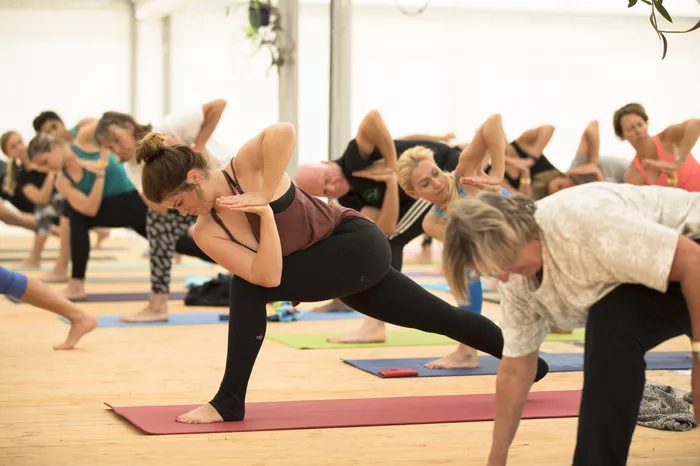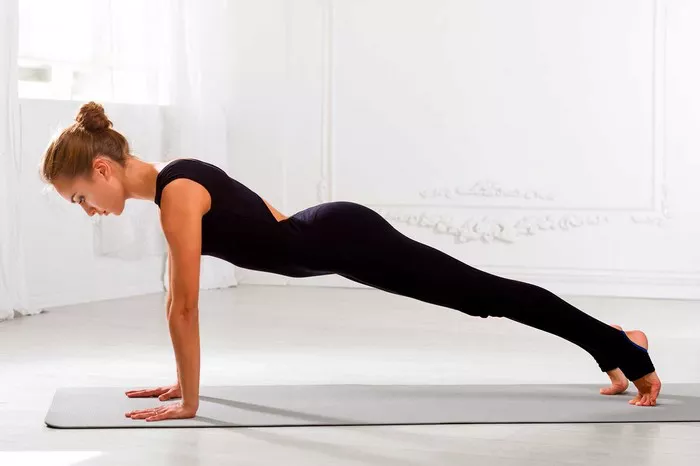Horse Pose, also known as Ashwa Sanchalanasana in Sanskrit, is a dynamic yoga posture that provides a wide range of physical, mental, and emotional benefits. In this article, we will explore the advantages of practicing Horse Pose and why it is considered one of the foundational asanas in yoga. We will break down the posture, explain how it affects the body, and discuss its significance within the broader context of yoga practice.
What Is Horse Pose
Horse Pose is typically included in the Sun Salutations, a sequence of yoga poses that serve as a warm-up and help prepare the body for more advanced postures. While it might appear relatively simple, Horse Pose requires balance, strength, and focus to execute correctly. It is characterized by a deep lunge with one foot forward, the back leg extended straight behind, and the torso aligned upright.
For those new to yoga, Horse Pose may feel challenging at first, but with practice, it can become a powerful tool for building strength, flexibility, and body awareness.
In its traditional form, Horse Pose is also known as Ashwa Sanchalanasana, which translates to “Ashwa” meaning horse and “Sanchalana” meaning to move. This name reflects the posture’s connection to the powerful and graceful movements of a horse, invoking its strength, stability, and agility.
Proper Alignment in Horse Pose
Before diving into the benefits, let’s first review the correct alignment for Horse Pose:
Start in a standing position: Begin by standing upright on the mat with your feet hip-width apart.
Step one foot back: Take a big step back with your right leg, bending your left knee at a 90-degree angle. Your left knee should track directly over your left ankle.
Extend the back leg: The right leg should be extended straight behind you, with the toes pointing down toward the mat and the heel lifted.
Engage the core and lift the chest: Ensure that your torso remains upright, with your spine aligned and your core engaged. The chest should stay lifted, and your gaze should be forward.
Hold the pose: Maintain a steady breath and hold the pose for a few breaths, ensuring that your hips are square, shoulders are aligned with your hips, and your back leg remains extended.
Repeat on the other side: After holding the pose for a few breaths, switch sides by stepping the left leg back and bending the right knee forward.
1. Strengthening the Legs and Core
One of the primary benefits of Horse Pose is its ability to build strength in the lower body, especially the legs and core. The deep lunge position requires the muscles of the thighs, calves, and glutes to engage and stabilize the body. As you hold the posture, the front leg works to maintain a 90-degree angle, while the back leg provides support through its extended position.
This intense engagement of the lower body muscles helps:
- Strengthen the quadriceps (front thigh muscles) and hamstrings (back thigh muscles).
- Activate the glutes and hip flexors, which helps in increasing lower body strength.
- Develop endurance in the calves, which are constantly working to support the extended leg.
In addition, the core plays an essential role in maintaining balance and stability in this pose. Engaging the abdominal muscles ensures proper spinal alignment and supports the deep stretch in the hip flexors. This strengthens the entire core, improving overall posture and providing better control during more complex asanas.
2. Increasing Flexibility
Horse Pose is a fantastic stretch for the hip flexors, which are often tight due to prolonged sitting or inactivity. By extending the back leg and pressing the hips forward, this posture helps to release tension in the hip flexors and open up the front of the hips. Regular practice of this pose can gradually increase flexibility in the following areas:
Hip Flexors: The front leg is bent deeply, while the back leg is extended, offering a deep stretch to the hip flexors.
Hamstrings: As the back leg is extended, it stretches the hamstrings, especially if you engage the leg and lift the heel toward the ceiling.
Groin: The alignment of the legs in this pose also helps stretch the inner thighs and groin muscles, which can reduce tightness in the pelvic region.
Quadriceps: While the focus is on the hips and legs, the quadriceps of the back leg also receive a mild stretch, improving flexibility in this area.
Through consistent practice, you can increase flexibility not only in the legs but also in the lower back and pelvis. This contributes to a greater range of motion in the joints and reduces the likelihood of muscle imbalances.
3. Improving Balance and Stability
In Horse Pose, maintaining balance is crucial to performing the posture correctly. Since one leg is bent and the other is extended, it requires focus and coordination. By engaging the core and focusing on a steady breath, practitioners are encouraged to find a sense of stability within the pose.
Practicing this posture strengthens proprioception—the body’s awareness of its position in space—because the body is forced to balance on one leg while keeping the other leg extended behind. Over time, this helps improve balance in other yoga poses and in daily activities.
Additionally, the need to engage the core muscles in Horse Pose directly contributes to greater stability, as the abdominal muscles are key in preventing wobbling or leaning too far in any direction. This is particularly beneficial for individuals who struggle with balance or have a sedentary lifestyle that has weakened their stabilizing muscles.
4. Stretching and Opening the Chest
While Horse Pose primarily focuses on the lower body, it also offers significant benefits for the chest and upper body. In the correct alignment, you are encouraged to lift the chest and keep the spine long and straight, which helps open the chest area.
This posture can:
- Open the chest and stretch the front of the shoulders, particularly when you focus on lifting the sternum (breastbone) and broadening the collarbones.
- Improve posture by counteracting the effects of slouching or hunching, which are common due to modern-day activities like sitting at desks or using devices.
- Expand lung capacity by encouraging deep breathing as you hold the pose, which helps improve respiratory function.
This aspect of the pose makes it a valuable counterpose to other movements or seated postures that may cause the chest to tighten or compress.
5. Stimulating Circulation and Blood Flow
Holding Horse Pose for extended periods encourages better circulation throughout the body, particularly in the legs and pelvis. The deep lunge position helps increase blood flow to the muscles and joints of the lower body, which can have several positive effects:
- Increased oxygenation of the muscles, which aids in their recovery and reduces fatigue.
- Improved circulation to the pelvic region, which supports better reproductive health and digestion.
- Relief from stiffness in the legs, hips, and lower back, as the blood flows more freely through these areas.
As a result, practicing Horse Pose regularly can contribute to better overall circulation and increased vitality.
6. Mental Clarity and Focus
Yoga is not just about physical benefits; it also nurtures the mind and spirit. Horse Pose encourages practitioners to cultivate a sense of focus and presence, which can be particularly useful in reducing mental stress. By holding the pose and concentrating on breathing and body alignment, individuals are reminded to stay grounded and centered in the present moment.
The deep engagement of the core and legs requires focus and concentration, which helps clear the mind of distractions. This leads to mental clarity and emotional stability. Practicing such dynamic poses can also act as a form of moving meditation, which helps reduce anxiety, increase mindfulness, and improve mental resilience.
7. Promoting Emotional Strength and Confidence
The symbolism of the horse, known for its power, grace, and agility, plays a role in how the practitioner experiences the pose. In yoga, certain postures are linked with specific emotions and energies, and Horse Pose is often associated with strength, empowerment, and self-confidence.
The act of stretching, strengthening, and stabilizing the body while focusing on the breath can help foster feelings of empowerment. As you hold the pose, you may feel a sense of internal strength building, which can have a positive effect on your mental and emotional well-being.
By regularly practicing Horse Pose, you can develop greater emotional resilience, improve your self-esteem, and cultivate a more positive outlook on life.
Conclusion
Horse Pose is a powerful asana that offers a wide variety of physical, mental, and emotional benefits. Whether you’re new to yoga or an experienced practitioner, incorporating Horse Pose into your practice can help strengthen the legs and core, improve flexibility, enhance balance, and promote overall well-being.
By practicing this posture regularly, you can build a strong foundation in your yoga practice, while also enjoying the broader benefits of improved circulation, better posture, and greater mental clarity. The connection to the symbolic strength and grace of the horse also reminds us of the power within, helping to foster emotional stability and self-confidence.
If you’re looking for a pose that challenges both the body and mind, Horse Pose is an excellent addition to your yoga practice. With continued practice, the benefits of Horse Pose will extend beyond the mat, helping to improve your overall health, vitality, and outlook on life.
Related topics




















